In the realm of fitness, the notion of muscle growth in a calorie deficit can seem paradoxical.
Yet, it’s entirely possible with the right dietary strategies.
Through strategic eating habits, you can harness the power of nutrition to fuel muscle growth in a calorie deficit.
Throughout this journey, you may encounter pressing questions:
- Can you still gain muscle while in a calorie deficit?
- How do I ensure I’m getting enough protein, carbs, and fats for muscle building despite eating fewer calories?
- What strategies can I employ to preserve muscle mass during weight loss?
- Which foods should I prioritize to promote muscle growth in cutting deficit?
By the end of this journey, you’ll possess the knowledge and tools needed to craft a dietary plan tailored to your specific goals, paving the way for a stronger, leaner, and more confident version of yourself.
Is Muscle Growth Possible in a Calorie Deficit?

The answer is YES, but with a twist. The concept of gaining muscle in calorie deficit may seem counterintuitive at first glance.
After all, muscle growth typically requires a surplus of calories to provide the energy and nutrients needed for tissue repair and hypertrophy.
However, several factors contribute to muscle growth in a calorie deficit.
Firstly, adequate protein intake is paramount for preserving lean muscle mass during periods of calorie restriction.
Protein provides the building blocks (amino acids) necessary for muscle repair and synthesis, thereby mitigating muscle loss.
Furthermore, engaging in regular resistance training stimulates muscle protein synthesis, which can offset the effects of a calorie deficit on muscle mass.
While the rate of muscle gain may be slower in a calorie deficit compared to a surplus, consistent training and proper nutrition can still yield significant results over time.
Balancing Macronutrients for Muscle Growth and Fat Loss
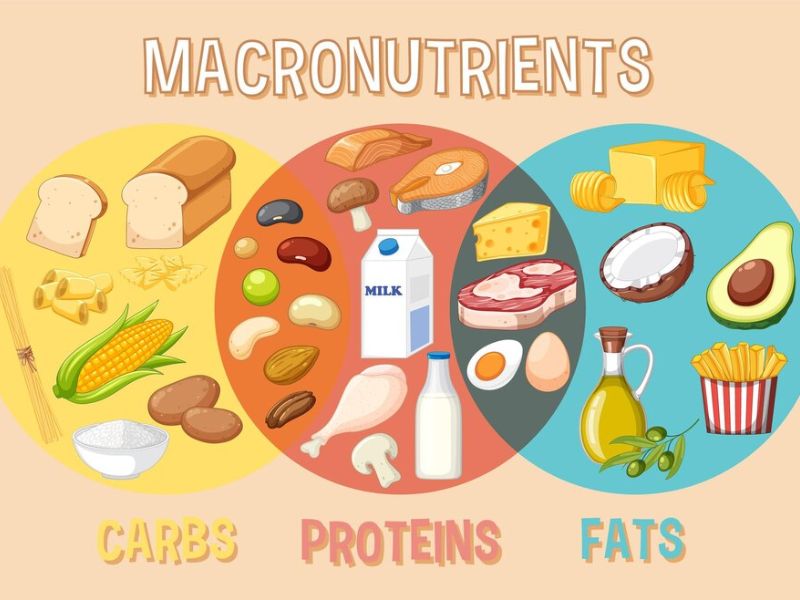
To support muscle growth in a calorie deficit, it’s crucial to strike the right balance of macronutrients—protein, carbohydrates, and fats.
Protein, as mentioned earlier, plays a central role in preserving muscle mass and promoting muscle repair and growth.
Aim to include lean protein sources such as poultry, fish, lean cuts of meat, eggs, dairy, and plant-based options like tofu and legumes in your diet.
Carbohydrates serve as the body’s primary source of energy, fueling workouts and aiding in recovery.
Opt for complex carbohydrates such as whole grains, fruits, vegetables, and legumes, which provide sustained energy and essential nutrients.
Healthy fats are vital for hormone production, nutrient absorption, and overall health.
Incorporate sources of unsaturated fats, such as avocados, nuts, seeds, olive oil, and fatty fish, into your meals to support muscle growth and optimize overall well-being.
Macronutrient Ratio Matters:
The ratio of protein, carbs, and fat in your diet plays a role in both muscle building and fat loss. Here’s a general guideline:
- Protein: 25-35% of total calories (helps build and repair muscle)
- Carbs: 40-50% of total calories (provides energy for workouts)
- Fat: 20-30% of total calories (supports hormone function and satiety)
Explore some online macro calculator for personal preferences.
Dietary Adjustments to Preserve Muscle Mass in Calorie Deficit

- Eat Protein Like Clockwork: Aim for 3-4 protein punches throughout the day to keep your muscles constantly fed for repair.
- Post-Workout Protein Push: Get 20-30 grams of protein within 2 hours after your sweat session to maximize muscle growth.
- Leucine Love: Choose protein sources like chicken, fish, lentils, or soybeans that are high in Leucine, an amino acid that jumpstarts muscle building.
- Protein Powder for the Win (optional): If you struggle to hit your protein goals, consider protein powder for a convenient boost. Whey is great post-workout, while casein offers sustained protein release.
- Don’t Skip the Veggies: Fruits, veggies, and whole grains provide essential vitamins and minerals your muscles need to stay healthy and repair themselves.
- Water, Water Everywhere: Stay hydrated throughout the day, especially before, during, and after workouts, to keep muscle protein synthesis running smoothly.
- Sleep is Your Superpower: Aim for 7-8 hours of shut-eye each night. Muscle repair thrives during sleep, so prioritize rest for optimal recovery.
Foods to Support Muscle Growth in a Calorie Deficit
Your grocery list should prioritize these muscle-building heroes:
Lean Proteins:
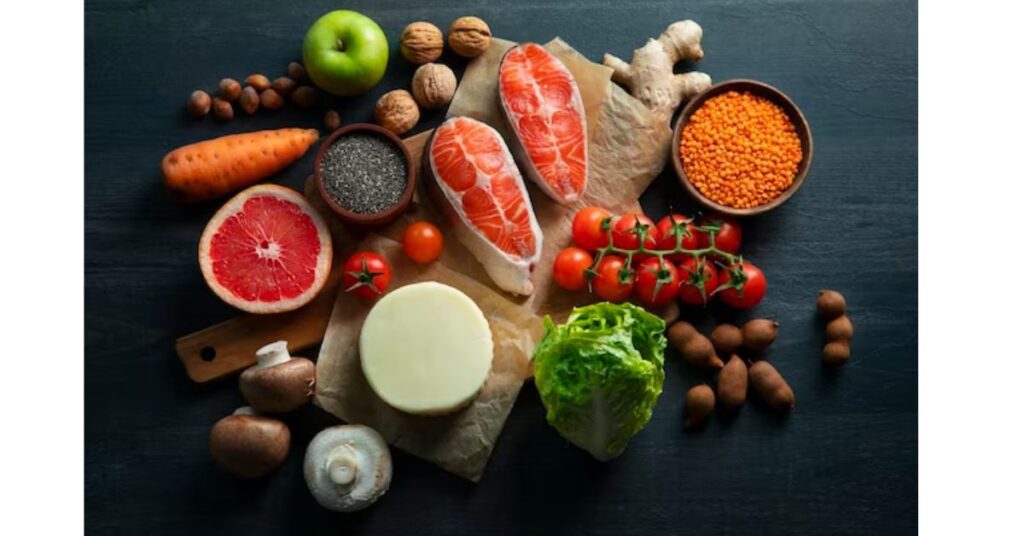
The building blocks of muscle.
- Chicken breast
- Turkey
- Fish (salmon, tuna, trout)
- Lean cuts of beef or pork
- Eggs (especially egg whites)
- Greek yogurt
- Cottage cheese
- Tofu
- Lentils
- Beans (black beans, chickpeas)
Whole Grains and Complex Carbohydrates:
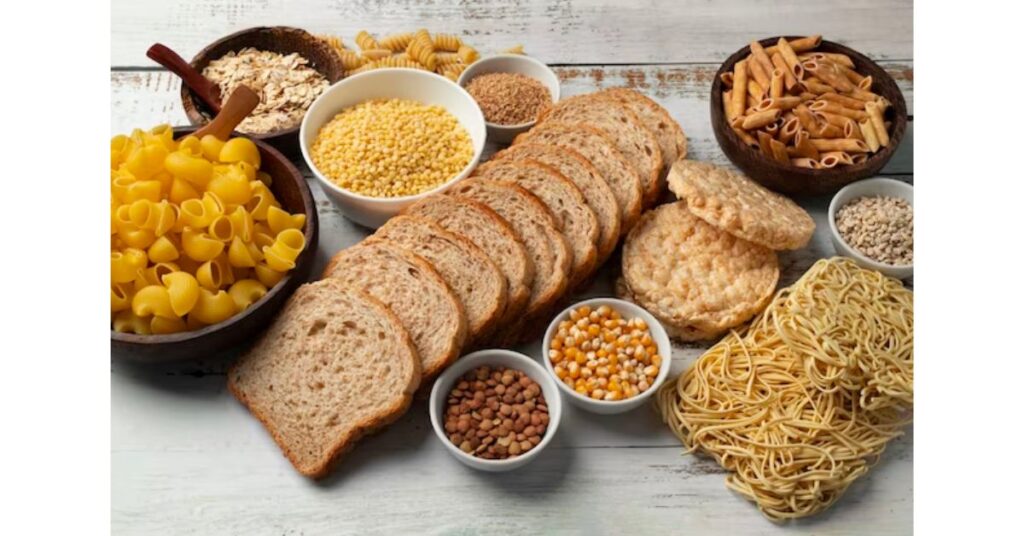
These provide sustained energy.
- Brown rice
- Quinoa
- Oats
- Barley
- Whole wheat pasta
- Whole grain bread
- Buckwheat
- Farro
- Bulgur
- Millet
Healthy Fats:
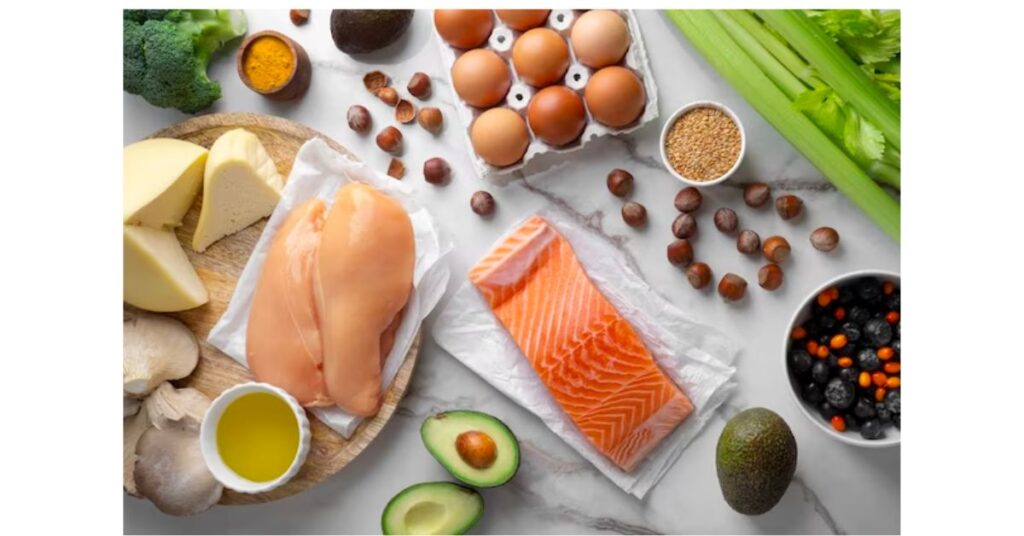
These provide a variety of nutrients your body needs to function at its best.
- Avocado
- Nuts (almonds, walnuts, cashews)
- Seeds (chia seeds, flaxseeds, pumpkin seeds)
- Olive oil
- Coconut oil (use sparingly)
- Fatty fish (salmon, mackerel, sardines)
- Nut butters (peanut butter, almond butter)
Sample Meal Plan that muscle growth in a calorie deficit
Here is a sample meal plan which will help you in muscle growth in a calorie deficit:
Pre-Workout Meal (1-2 hours before workout, around 200-300 calories):
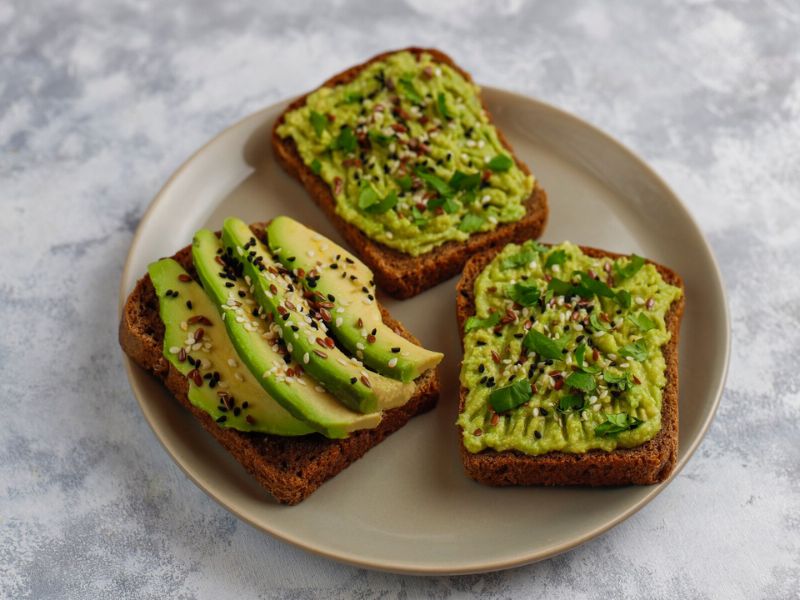
- Option 1: A small bowl of rolled oats cooked in unsweetened almond milk with a sprinkle of chia seeds and berries.
- Option 2: A slice of whole-wheat toast with mashed avocado and a sprinkle of hemp seeds.
- Option 3: A protein smoothie made with low-fat milk, a scoop of plant-based protein powder, and a handful of spinach.
Post-Workout Meal (within 30 minutes after workout, around 300-400 calories):

- A protein smoothie made with low-fat milk, a scoop of protein powder, a banana, and spinach.
- Chickpea salad sandwich made with whole wheat bread, mashed chickpeas, chopped vegetables (onions, tomatoes, cucumbers), and a light yogurt dressing.
- Tofu scramble with chopped vegetables (onions, peppers, mushrooms) served with a small portion of brown rice.
Breakfast (around 400-500 calories):

- Pancakes: Blend 1 cup cooked oats, 1/2 cup low-fat cottage cheese, 1 egg white, and a splash of almond milk. Cook like pancakes and top with a sprinkle of berries.
- Alternatively: Vegetable Frittata: Saute chopped onions, peppers, and spinach. Add 2 beaten egg whites and a sprinkle of grated low-fat cheese. Cook until set.
Lunch (around 400-500 calories):
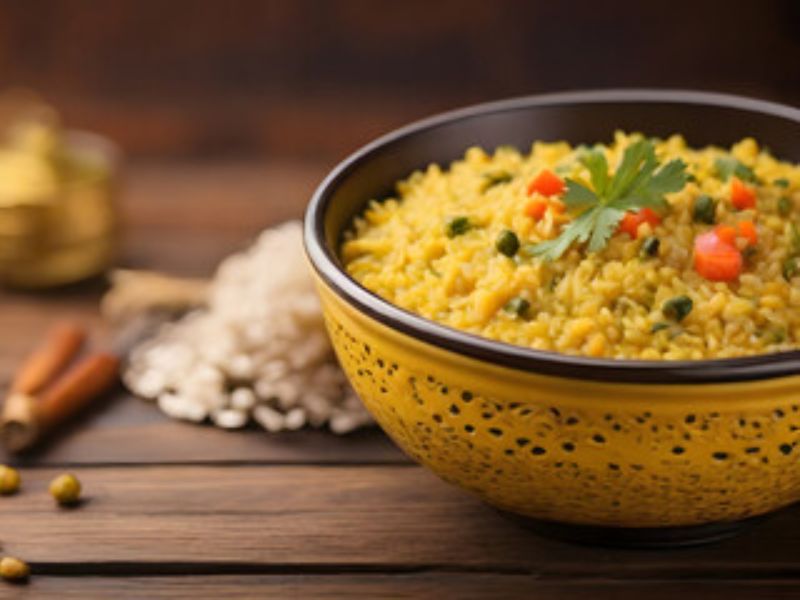
- Dal Makhani (black lentil curry) with a cup of brown rice or quinoa and a side salad (spinach, cucumber, tomatoes) dressed with a light lemon vinaigrette. Dal Makhani is a protein-rich lentil dish.
- Alternatively, Vegetable Khichdi (mixed lentil and rice dish) with a side of roasted vegetables (broccoli, cauliflower, carrots).
Dinner (around 400-500 calories):
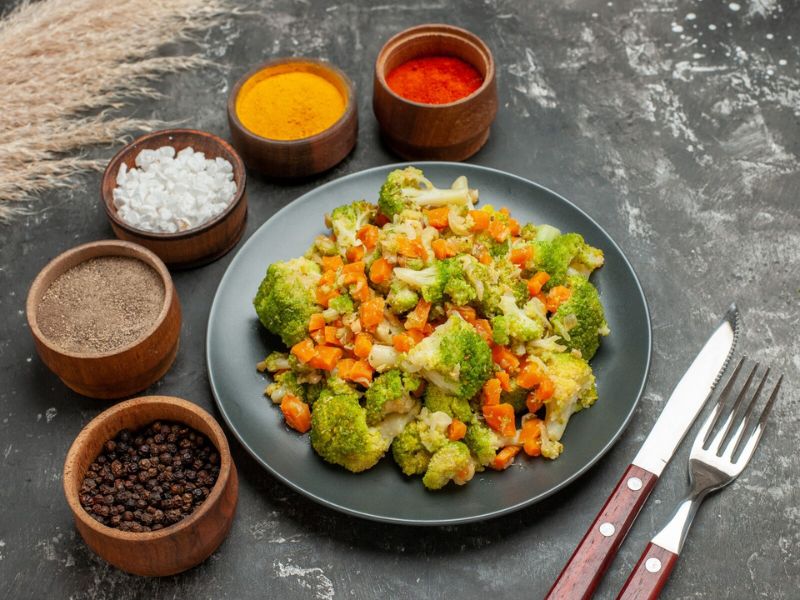
- Mushroom Curry: Saute a variety of mushrooms with onions, tomatoes, and spices. Enjoy with a small portion of brown rice or roti.
- Stir-fried vegetables (broccoli, cauliflower, green beans) with tofu or tempeh, cooked in a small amount of olive oil, and served with a side of brown rice or quinoa.
- Alternatively, a bowl of vegetable kofta curry (vegetable dumplings in gravy) made with minimal oil, with a small whole wheat roti or a side of brown rice.
Conclusion
In conclusion, modifying your diet to support muscle growth in calorie deficit is indeed possible with the right approach.
By prioritizing protein intake, balancing macronutrients, adjusting calorie intake strategically, and making smart food choices, you can achieve your goals of building muscle and losing fat simultaneously.
Remember that sustainable progress takes time and consistency – be patient with yourself and trust the process.
With dedication and informed dietary strategies, you can maximize muscle growth and achieve the physique you desire.


1 thought on “How to modify diet for muscle growth in a calorie deficit?”